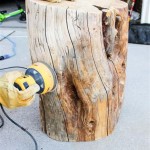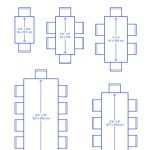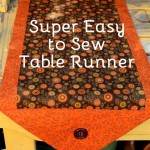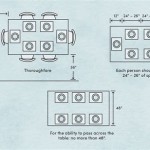```html
36 x 36 Tablecloth: A Comprehensive Guide
The 36 x 36 tablecloth is a versatile and commonly used size for a variety of tables. Its relatively small dimensions make it ideal for smaller square or round tables commonly found in kitchens, breakfast nooks, or as accent pieces. Understanding the characteristics, appropriate uses, and available materials for this size of tablecloth is crucial for making an informed purchase and achieving the desired aesthetic.
This article provides a comprehensive guide to the 36 x 36 tablecloth, covering various aspects including its typical applications, available fabrics, considerations for selecting the right size, and tips for proper care and maintenance. This information is designed to assist individuals in selecting and utilizing this practical tablecloth size effectively.
Understanding the Dimensions and Table Size Compatibility
The "36 x 36" designation refers to the dimensions of the tablecloth itself, measured in inches. Therefore, a 36 x 36 tablecloth is a square with each side measuring 36 inches. This size is generally best suited for square tables between 24 and 30 inches on each side, or round tables with a diameter within the same range. The excess fabric beyond the tabletop creates the "overhang" or "drop," which contributes to the overall appearance and functionality of the tablecloth.
A table smaller than 24 inches may have an excessive overhang, potentially hindering movement and appearing visually unbalanced. Conversely, a table larger than 30 inches may result in an insufficient overhang, exposing too much of the table's surface and detracting from the desired aesthetic. Careful measurement of the table dimensions is essential before selecting a 36 x 36 tablecloth.
The desired overhang is a matter of personal preference and the intended use of the tablecloth. A formal setting might benefit from a longer drop, adding elegance and sophistication. A more casual setting could opt for a shorter drop, enhancing practicality and ease of use. Factors such as children, pets, or frequent spills should also be considered when determining the optimal overhang length.
When measuring a round table, the diameter is the critical measurement. The diameter is the distance across the table passing through the center. A 36 x 36 tablecloth placed on a round table with a diameter of 30 inches will result in a 3-inch overhang on all sides. This measurement is calculated by subtracting the table's diameter from the tablecloth's dimension and dividing the result by two: (36 - 30) / 2 = 3. This calculation is necessary to ensure the desired aesthetic is achievable.
Exploring Fabric Options for 36 x 36 Tablecloths
The material of a 36 x 36 tablecloth significantly impacts its appearance, durability, and ease of care. Common fabric options include cotton, linen, polyester, and blends of these materials. Each material offers unique advantages and disadvantages that should be considered based on individual needs and preferences.
Cotton is a natural fiber known for its softness, breathability, and affordability. Cotton tablecloths are generally easy to care for and can be machine washed and dried. However, cotton is prone to wrinkling and may require ironing to maintain a crisp appearance. It is also susceptible to staining, particularly with vibrant colored liquids or sauces. Pre-treating stains promptly is recommended to prevent permanent discoloration.
Linen is another natural fiber prized for its elegance, durability, and absorbent properties. Linen tablecloths have a distinctive texture and drape beautifully. However, linen is more expensive than cotton and requires careful handling. It wrinkles easily and may require professional laundering or meticulous ironing. Linen is also more prone to shrinking, so following care instructions carefully is essential.
Polyester is a synthetic fiber renowned for its durability, wrinkle resistance, and stain resistance. Polyester tablecloths are relatively inexpensive and easy to care for. They can be machine washed and dried without significant shrinkage or wrinkling. Polyester is less breathable than natural fibers and may feel less comfortable in warm weather. However, its resilience makes it a practical choice for everyday use and high-traffic environments.
Blends of cotton and polyester offer a compromise between the advantages of both materials. These blends typically combine the softness and breathability of cotton with the durability and wrinkle resistance of polyester. The specific ratio of cotton to polyester affects the overall characteristics of the fabric. A higher percentage of polyester will result in greater wrinkle resistance, while a higher percentage of cotton will enhance the fabric's softness.
Beyond these common choices, specialized fabrics like vinyl or laminated cotton are available for added protection against spills and stains. These materials are particularly suitable for outdoor use or environments where spills are likely to occur. However, they may lack the aesthetic appeal of natural fibers and can feel less comfortable to the touch.
Considerations for Color, Pattern, and Style
Beyond fabric, the color, pattern, and style of a 36 x 36 tablecloth contribute significantly to the overall ambiance of the space. The selection should complement the existing decor and reflect the intended use of the table. Neutral colors like white, beige, and gray are versatile and can be easily paired with various color schemes. They also provide a clean and sophisticated backdrop for displaying tableware and centerpieces.
Bold colors and patterns can add visual interest and personality to a room. However, it's essential to ensure that the chosen colors and patterns complement the existing decor and do not clash with other elements in the space. Consider the overall style of the room when selecting a tablecloth with a pattern. For example, a floral pattern might be suitable for a rustic or cottage-style kitchen, while a geometric pattern might be more appropriate for a modern or contemporary dining area.
Solid-colored tablecloths are a safe and versatile choice, allowing for easy coordination with other table linens and accessories. They provide a clean and uncluttered look that complements a variety of decorating styles. Consider the undertones of the colors when making a selection. Warm colors like red, orange, and yellow evoke feelings of warmth and energy, while cool colors like blue, green, and purple create a sense of calm and tranquility.
The style of the tablecloth can also influence the overall atmosphere of the space. A simple, hemmed tablecloth is a classic and understated choice. A tablecloth with lace or embroidery can add a touch of elegance and sophistication. A tablecloth with a scalloped edge can create a more whimsical and playful look.
The intended use of the table should also be considered when selecting the color, pattern, and style of the tablecloth. A tablecloth used for everyday meals can be more casual and practical, while a tablecloth used for special occasions can be more formal and decorative. Think about the lighting in the room as well. Darker colors can make a room feel smaller and more intimate, while lighter colors can create a sense of spaciousness.
Caring for and Maintaining Your 36 x 36 Tablecloth
Proper care and maintenance are essential for preserving the life and appearance of a 36 x 36 tablecloth. Following the manufacturer's care instructions is crucial to avoid damage or discoloration. Different fabrics require different cleaning methods and handling techniques.
For cotton and linen tablecloths, machine washing in cold water with a mild detergent is generally recommended. Avoid using harsh chemicals or bleach, which can damage the fibers and fade the colors. Tumble drying on low heat or air drying is preferable to prevent shrinkage and wrinkling. Ironing while the fabric is still slightly damp can help remove wrinkles and restore its crisp appearance.
Polyester tablecloths are generally more forgiving and can be machine washed and dried without significant issues. However, it's still recommended to use a mild detergent and avoid high heat settings, which can damage the fibers. Ironing may not be necessary for polyester tablecloths, but if desired, use a low heat setting and iron on the reverse side of the fabric.
For stain removal, prompt action is crucial. Blot the stain with a clean cloth or paper towel to absorb as much of the liquid as possible. Avoid rubbing the stain, which can spread it and make it more difficult to remove. Pre-treat the stain with a stain remover or a mixture of water and mild detergent. Allow the stain remover to sit for a few minutes before washing the tablecloth according to the manufacturer's instructions.
Proper storage is also important. Store tablecloths in a cool, dry place away from direct sunlight. Folding tablecloths neatly and storing them in a drawer or on a shelf can prevent wrinkles and creases. Consider using acid-free tissue paper to protect delicate fabrics or tablecloths with embroidery or lace.
By understanding these key considerations and following appropriate care guidelines, individuals can select and maintain a 36 x 36 tablecloth that effectively enhances the aesthetics and functionality of their tables.
```
Set 6 Tablecloth Polyester Square 36 Inch By Broward Linens Variety Of Colors

Saro Lifestyle Hemstitched Tablecloth White 36 X Target

Sorfey Round Picnic Table Cover Checd Fitted Tablecloth Red 36 X Com

Intedge 36 X Square Black 100 Polyester Hemmed Cloth Table Cover

Sorfey Round Picnic Table Cover Checd Fitted Tablecloth Red 36 X Com

Snowy Red Village 36 X Square Tablecloth Laurie Anne S

Small Battenburg Lace Table Cloth 36 X Two Choices Of Colors White Beige 100 Cotton Vintage Not Used In Good Condition

Saro Lifestyle Snowflake And Ribbon Design Tablecloth Gold 36 X Target

Meioro Tablecloth Rectangle Table Cloth Cotton Linen 36 X Inch Yellow

Add Ship Square Polyester Tablecloth 36 X Inches Red Ca








